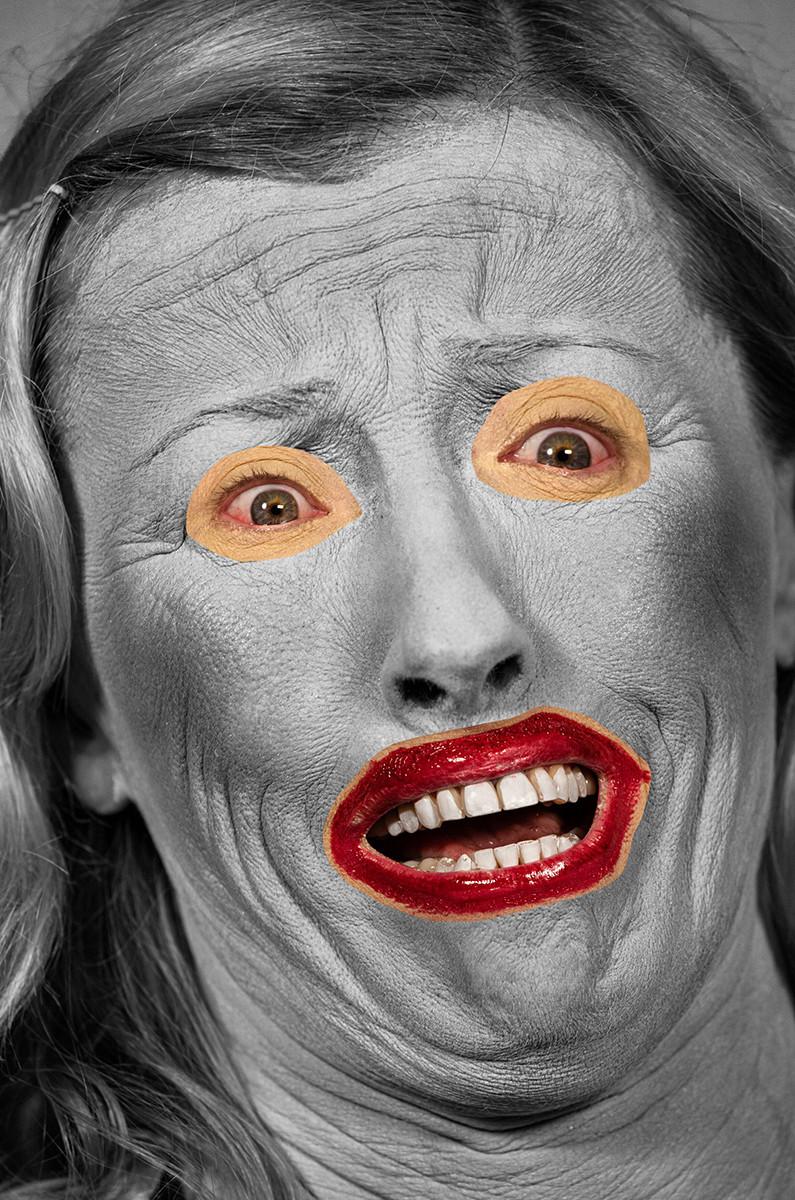“When I take photos, I try to get to a point where I no longer recognize myself. That’s often what it’s about.” – Cindy Sherman
On January 18, 2024, renowned American artist Cindy Sherman will unveil her latest work for the first time in the United States at the Hauser & Wirth premises on Wooster Street in New York. The exhibition features approximately 30 new works and marks Sherman’s return to historic SoHo where, in the late 1970s, she presented her now-iconic Untitled Film Stills at Artists Space, launching a career that has established herself as one of the most recognized and influential artists of our time. Sherman’s innovative work has explored themes of representation and identity in contemporary media for over four decades. Since the early 2000s, she has constructed characters using digital manipulation, meditating on the increasingly fractured sense of self in 21st century society and pursuing an artistic exploration that uniquely encapsulates her work since the beginning of his career.
In these later works, Sherman collaged various elements of his own face to construct entirely new characters, using digital manipulation to highlight the layered details and emphasize the malleability of the self. She removed the external context, avoiding any staging, to concentrate entirely on the details of the face. Here, she combines a digital collage technique that incorporates black-and-white and color photographs with more traditional methods of transformation, such as makeup, wigs and costumes, to create a group of unsettling portraits of laughing women, grimace, smile smugly and pout at the viewer.
To create these fragmented figures, Sherman photographed isolated sections of his own face (eyes, nose, lips, skin, hair, ears), then cut, pasted and distorted them onto a basic image, constructing, deconstructing and then reconstructing an image entirely new. In the dual role of photographer and model, Sherman continues to disrupt the typical dynamic between artist and subject. So even though all the images are composites of the artist’s face, they read like classic portraits. And, despite the layers, Sherman’s final works give a real sense of different “patterns.” With tight shots, and lots of hair in the frame, distorted expressions, Sherman’s fabricated women disrupt the voyeuristic gaze and subject-object binaries associated with long-standing traditions of portraiture.
Like Sherman’s use of prosthetics, the digital manipulation at the heart of this new series exaggerates the tension between identity and artifice. This effect is accentuated in works such as “Untitled #632” (2010/2023) and “Untitled #654” (2023), where Sherman combines both black and white and colored sections of the face, emphasizing the presence of the hand of the artist and disrupting any perception of reality, while recalling the hand-colored and hand-cut works she created in the 1970s. By employing this layering technique, Sherman creates a space of multiplicity, attracting our pay attention to the fact that identity is a complex and often constructed human concept that cannot be captured in a single image.
About the artist
Born in 1954 in Glen Ridge NJ, Cindy Sherman lives and works in New York. Her groundbreaking work has interrogated themes around representation and identity in contemporary media for over four decades. Rising to fame in the late 1970s with the group Pictures Generation, alongside artists such as Sherrie Levine, Richard Prince and Louise Lawler, Sherman first turned her attention to photography at Buffalo State College, where she studied art in the early 1970s. In 1977, shortly after moving to New York, she began her critically acclaimed series of Untitled Film Stills.
Sherman continued to channel and reconstruct familiar characters belonging to the collective psyche, often in disturbing ways, and by the mid-to-late 1980s the artist’s visual language began to explore the more grotesque aspects of humanity through the prism of horror and the abject, as seen in works such as Fairy Tales (1985) and Disasters (1986-89). These highly visceral images saw the artist introduce prosthetics and visible mannequins into her work, which would later be used in series such as Sex Pictures (1992) to add to the levels of artifice of her constructed female identities. Much like Sherman’s use of costumes, wigs, and makeup, their application often remained exposed. His famous Portraits of History, begun in 1988, used these theatrical effects to break, rather than maintain, any sense of illusion. Since the early 2000s, Sherman has used digital technology to further manipulate his characters.
For the artist’s Clown series (2003), she added psychedelic settings that were both playful and menacing, exploring the disparity between her subject’s outward personality and inner psychology. In her Society Portraits (2008), the artist used green screen to create grandiose environments for women in the upper echelons of society. These CGI backgrounds add to the apparent charm of the women Sherman portrays, heavily made-up and absorbed in their status in society in the face of aging. In his 2010 series of murals (installed for his retrospective at MoMA in 2012), Sherman presents several different figures against a computerized background with ill-fitting wigs, medieval dresses, and no makeup, instead using Photoshop to alter his features. face.
In his 2016 series Flappers, the viewer is confronted with the vulnerability of the aging process of 1920s Hollywood starlets, who pose in the glamorous attire of their heyday with exaggerated makeup. In 2017, Sherman began using Instagram to upload portraits using several facial-editing apps, transforming the artist into a plethora of protagonists in kaleidoscopic settings. Disorienting and strange, the posts highlight the dissociative nature of Instagram reality.
Cindy Sherman
January 18 – March 16, 2024
Hauser & Wirth
134 Wooster St.
New York, NY 10012
www.hauserwirth.com
2024-01-16 02:58:56
#Hauser #Wirth #York #Cindy #Sherman #Eye #Photography #Magazine


